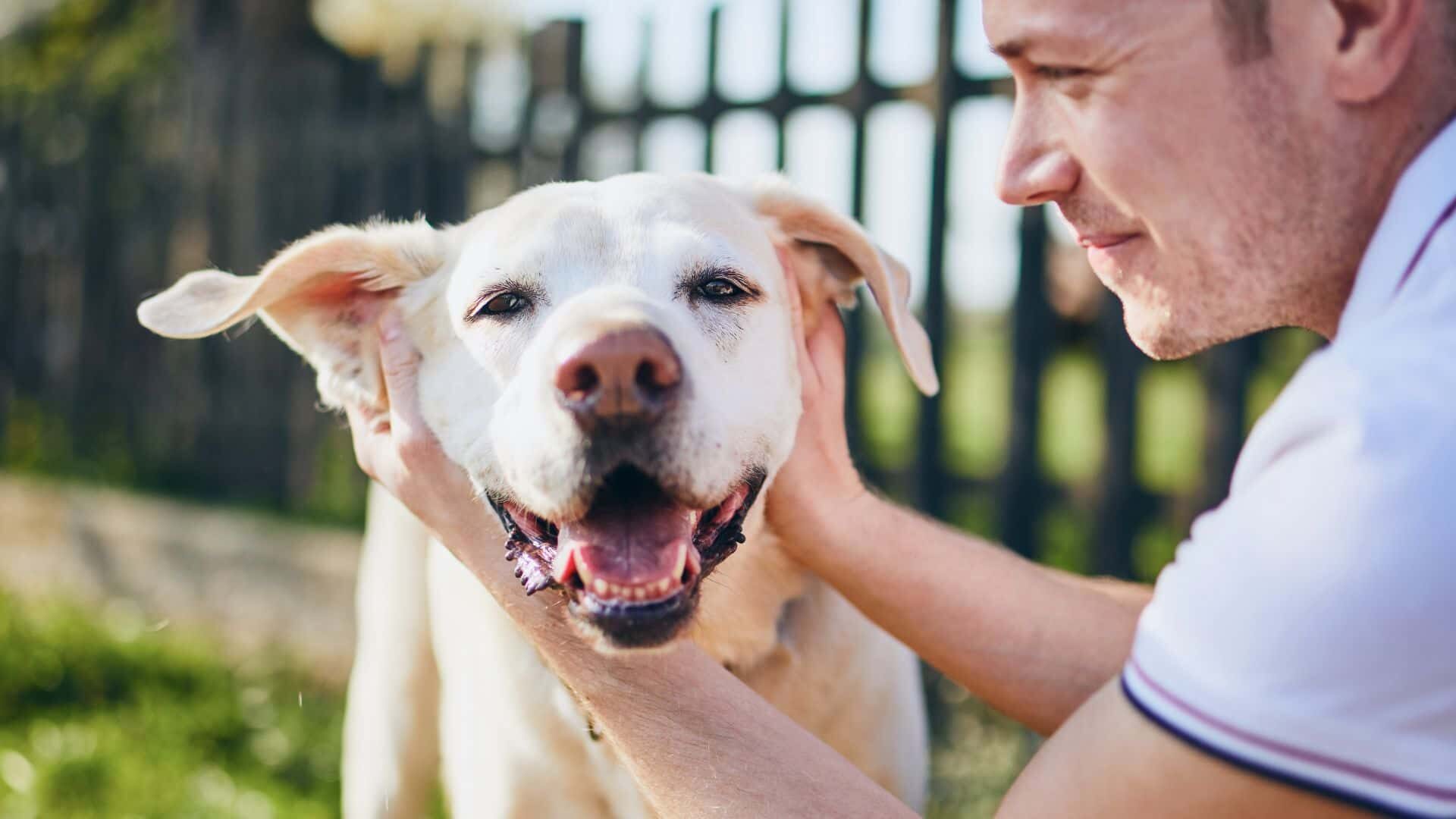Dogs are susceptible to urinary tract infections (UTIs). Dogs with urinary tract infections (UTIs) frequently try to urinate when they go outside. A painful urination may cause them to strain or cry or whine. In rare cases, you may even find blood in their urine. A urinary tract infection (UTI) may also be indicated by dripping urine or frequent genital licking. Having a strong smell in your dog’s urine could be a sign that he or she has an infection, as well.
There may be an issue with the bladder when housetraining stops working.
It is a warning sign that something is wrong with the bladder when housetraining stops working. Your previously well-behaved dog may have a UTI to blame if this happens.
When bacteria travel up the urethra and into the bladder, it results in a urinary tract infection (UTI). Even though the urine in the bladder is supposed to be germ-free, a urinary tract infection (UTI) can develop when bacteria make their way into the system. It’s also possible for a dog to develop bladder stones in conjunction with a UTI.
What is a UTI?

A urinary tract infection (UTI) in dogs is the same as a urinary tract infection (UTI) in humans. Bacteria is the most common cause of UTIs in dogs. The most common infectious disease in dogs is bacterial urinary tract infections. 14 percent of all dogs get bacterial UTIs at some point in their lives. That means the likelihood of your dog developing a urinary tract infection (UTI) is fairly high.
The urinary tract’s defenses are bypassed by normal skin and GI tract flora in the majority of dogs who develop UTIs. A urinary tract infection occurs as a result of these bacteria taking up residence in the urethra. Even though E. coli is the most common bacteria responsible for urinary tract infections (UTIs), other bacteria and even fungi can also cause infections.
The risk of your dog developing a urinary tract infection (UTI) can be increased by a number of factors. UTIs are more common in female dogs than in males, but male dogs can still contract them. Other health issues, such as chronic kidney disease and Cushing’s disease, increase the risk of UTIs in dogs.
What are the symptoms of canine bladder infection?
The symptoms of a bladder infection in dogs include pain, difficulty urinating, blood in the urine, straining to urinate, and frequent but small amounts of urination. If you have any of the following symptoms, you may have an infection in your urinary tract or bladder.
- Struggling to relieve oneself
- Urination is becoming more frequent.
- Urine with blood in it
- A urine sample that has a cloudy or overpowering odor
- A smaller volume of urine is produced
- Contingencies within your own residence
- While urinating, begin to sob.
- The act of licking one’s genitals
- Fever
- Thirst arousal
- Relatively low energy levels
Your veterinarian should be contacted if your dog is showing any of the above symptoms. Dogs can suffer from bladder and urinary tract infections, which can be extremely painful. However, these infections can often be cleared up quickly and easily when detected and treated early, so the sooner you can get your dog to the vet, the better.
What are the causes of Bladder infections in dogs?
Although urinary tract infections are more common in female dogs, any dog can experience the discomfort of a bladder infection at some point.
If your dog has a bladder infection, anything from crystals to bacteria to diseases like diabetes could be to blame. Dogs’ bladder problems can be caused by anything, even prescription drugs.
Bladder infections can affect any dog, but female dogs are more likely than males to develop them. Crystals, bacteria, diseases like diabetes, and even some medications can all contribute to these unpleasant and sometimes painful side effects.
What’s worse case in dog’s urinary tract infection?

Even if you only have a urinary tract infection, it can be extremely dangerous. They can cause lower urinary tract dysfunction, kidney or bladder stones, inflammation of the prostate gland, infertility, blood poisoning, and even kidney infection and kidney failure if left untreated. Additionally, some symptoms could indicate something far more serious than a simple urinary tract infection (UTI).
1. Urine with a Reddish Color
The presence of blood in the urine is one of the most concerning signs of an infection. Contact your veterinarian right away if you suspect blood in your dog’s urine. This could be an indication of a urinary tract infection (UTI), but it could also be an indication of the following conditions:
- Poisoning
- Disease of the kidneys
- Trauma
- Cancer
- Ureters are prone to urinary tract stones
Platelet breakdown, which can be fatal, can occur as a result of certain types of rodent poison. The better your dog’s chances are of recovery; the sooner you get him to a veterinarian. Other signs of anemia in dogs include pale gums and dark, bloody stools.
This could also be a sign of physical trauma. There may be internal damage to your dog’s organs after a car accident, dog fight, or even a minor injury.
Dogs suffering from urinary tract stones in the kidney, bladder, or elsewhere experience excruciating pain. Your dog’s urethra may become inflamed and even blocked, which is a medical emergency.
2. Urinary Problems
The inability to urinate is a medical emergency that requires immediate attention. A ruptured bladder in your dog can be fatal if left untreated, so be sure to contact your veterinarian as soon as you notice this sign.
Some of the more common causes of difficulty urinating include:
- There is an infection in the urinary tract
- Obstructions
- In the urinary tract, scar tissue
- An injury or disease of the spinal cord
- Trauma
- Cancer
- Cancer of the prostate
This situation is best handled by your veterinarian, who has the training and experience to handle it. Scar tissue in the urinary tract may be caused by chronic urinary tract infections or other diseases, and trauma and obstructions can be fatal if not treated.
3. Urinary Habits Change
Most of us are aware of our dog’s bowel movements, whether we like it or not. When it comes to urination, many of us have been caught in the act of examining our dog’s poop by non-dog owners. This meticulousness is more than just a sign of concern; it can assist your veterinarian in spotting problems before they become critical.
When your dog’s urination habits change, you need to see your veterinarian immediately. Aside from being a behavioral issue, accidents in the house could also be a sign of a serious medical problem. Diabetes, hypothyroidism, Cushing’s disease, cancer, trauma, or an infection of the urinary tract are just a few of the conditions that can cause urinary tract accidents or increased frequency of urination. Supplements and medications may be recommended by your veterinarian.
4. Urethral Carcinoma
Nothing is more terrifying to a dog owner than the prospect of cancer developing in their pet. Fortunately, canine bladder cancer is extremely rare. Bladder cancer is still an issue for dog owners, especially those who own breeds that are more susceptible to the disease, such as Scottish Terriers and Shetland sheepdogs, as well as Beagles and Wire Fox Terriers.
Bladder cancer can be detected by recurrent urinary tract infections or other urinary tract symptoms. The transitional cell carcinoma is the most common type of bladder cancer to be diagnosed (TCC). These cancers have a high rate of metastasis and are extremely aggressive. The prognosis of your dog can often be improved by early detection.
In the future, what can I do to reduce my risk of contracting a UTI?

If the UTI in your dog recurs, your vet will let you know if there is anything you can do to prevent it. Changing one’s diet may be necessary in some cases. To help prevent an infection from taking hold, they may also recommend medications or supplements that can alter the pH of the urine. With the help of your veterinarian, you can put in place strategies that have been proven to work.
1. Diagnoses of lower urinary tract disorders
A trip to the vet is necessary to diagnose lower urinary tract issues. The kidneys and bladder will be examined by your veterinarian. Additionally, they may conduct a urinalysis. Depending on the results, they may also order a urine culture, blood work, an ultrasound, or radiographs.
Urinary tract infections (UTIs) can cause a variety of symptoms in dogs, including urinary tract infections (UTIs), urinary tract infections (UTIs), and urinary tract infections (UTI).
2. Canine urinary tract infection treatment options
When a UTI is caused by bacteria, pain medication and antibiotics are used to treat it. It’s important to look at the root of the problem, if there is one. Surgical treatment for dogs with a recessed vulva is frequently beneficial. Changing a dog’s diet can help some dogs with bladder stones. This helps to keep bladder stones from forming in the future. To learn more about bladder stones, go to this page.
Talk to your veterinarian about supplementation and acupuncture as possible alternative treatments. UTI-infected dogs may benefit from cranberry juice, but this hasn’t been scientifically proven. Note that while cranberry juice or supplementation is thought to improve bladder health and reduce repeat UTIs, it cannot cure a current bladder infection.
You should ensure that your dog completes all prescribed medications. In the event that your dog’s UTI symptoms get worse while taking medication, contact your veterinarian right away.
After the medication is finished, make an appointment with your veterinarian to recheck your dog’s urine sample. This will help you determine whether or not your dog’s UTI has cleared up or if it needs to be treated again.
First, your veterinarian may conduct an examination of your dog’s feces, looking for bacteria, abnormal cells, or crystals, which could indicate the presence of bladder stones. Alternatively, your veterinarian may suggest a urine culture, which uses a sterile urine sample to look for bacterial growth. In order to determine whether or not there are any bacteria present in your dog’s urine and how those bacteria respond to various antibiotics, you can perform a urine culture and sensitivity test.
Your dog’s symptoms and severity will determine what kind of antibiotic he or she receives for UTIs, and current veterinary guidelines will also play a role in the type of antibiotic prescribed.
In Marx’s opinion, you can either collect a urine sample at home or have your veterinarian do it for you at the clinic. Prior to bringing in any samples, be sure to consult with your veterinarian (your vet may prefer to do this in the clinic). Get a urine sample at home by following these steps:
How to collect urine sample of dog at home?
In order to get the most concentrated urine sample, Marx recommends obtaining your dog’s first-morning pee. Catch it in an airtight container that can be closed and sanitized.
When your dog pees, you can use a soup ladle to catch the liquid and then transfer it to a fresh container. A home urine sample must be delivered to your veterinarian’s office within two hours, however.
In the event that a dog’s lower urinary tract is not treated, what can happen?
If left untreated, canine urinary tract disease can lead to serious health issues. An infection that goes untreated can cause a blockage of the urethra, causing urine output to be disrupted and potentially toxic waste to build up.
Disease or cancer can progress if left untreated, and your dog’s urinary symptoms will deteriorate or expand to include additional symptoms if left untreated. There are many diseases that can be fatal if they are not treated. Some of these conditions can be treated to help your dog live a longer and healthier life, but they are difficult to treat.
Your dog’s urinary tract problems can be solved if you get a proper diagnosis and rule out any other possible causes.
Watch Natural remedy for dog with urinary tract infection | Video
How do you tell if your dog has a UTI?
Dogs with urinary tract infections (UTIs) frequently try to urinate when they go outside. A painful urination may cause them to strain or cry or whine. In rare cases, you may even find blood in their urine. A urinary tract infection (UTI) may also be indicated by dripping urine or frequent genital licking.
Can a dog UTI cure itself?
When a bacterial infection has been established in a UTI, medical attention is often required. If you have a UTI, you won’t be able to get better without prescription antibiotics or veterinary care.
What can I do at home to treat a UTI in one of my dogs?
D-mannose, a component of cranberry juice, is particularly effective in treating urinary tract infections (UTIs). As a non-metabolizable sugar, this aids in the removal of bladder bacteria, which could otherwise lead to infection and other complications. It’s most effective on the E.
For dogs, how do veterinarians check for UTIs?
Diagnosis. Your veterinarian will need to collect a sterile urine sample from your pet in order to diagnose a urinary tract infection (UTI). When collecting urine, cystocentesis, a procedure that involves inserting a needle through the body’s wall into the bladder and withdrawing urine with a syringe, is the best option.
For a UTI, should I bring my dog into the vet?
Seeking veterinary care is absolutely necessary if your dog shows signs of a urinary tract infection. If left untreated, urinary tract infections (UTIs) can lead to more serious conditions, such as kidney disease.
Verdict; When to Call a Veterinarian

Schedule an appointment with your veterinarian if you notice any of the following symptoms or signs: As a dog owner, you should always be on the lookout for signs of a medical emergency. Immediately take your dog to a nearby clinic or emergency hospital for treatment.
Bottom up
Please comment below about your ideas and share this “What Are the Symptoms of Dogs with UTI: Guide to Cure ” article with your friends.
Stay tuned with our website to find out more exciting stuff. Don’t forget to check out our previous articles too.
Until the, Read about, What Are the Symptoms of Dog Cold and Flu: Guide to Cure





